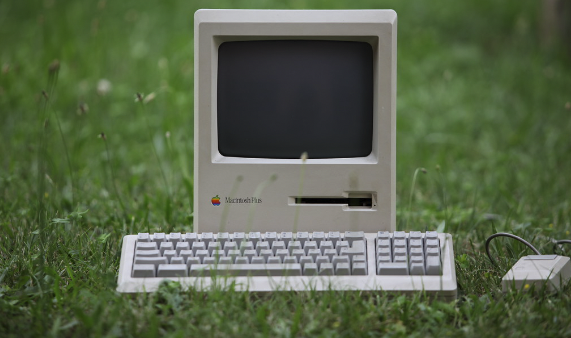There are various parts to a desktop computer.
In this article, we’ll cover all of them.
We’ll talk about the motherboard, CPU, RAM, GPU, and others.
Then we’ll go into execution, storage of program code, and more.
Let’s take a look.
Table of Contents
Parts of a Desktop Computer
Motherboard
The motherboard is the central part of a desktop computer.
It’s a large, flat piece of circuitry that everything else connects to.
The motherboard has slots for the CPU, RAM, and other expansion cards.
It also has connectors for the power supply, hard drive, and optical drive.
The motherboard is what makes everything work together.
Related: Best White Motherboards of 2025
CPU
The CPU is the brain of the computer.
It handles all the calculations and processing.
The speed of the CPU is measured in gigahertz (GHz).
A faster CPU can handle more tasks at once. It can also run programs faster.
RAM
RAM stands for “random access memory.” It’s where the computer stores information it’s using right now.
The more RAM you have, the more information your computer can store.
GPU
The GPU is the “graphics processing unit.” It’s what renders images on the screen. A faster GPU can render more complex images and do it faster.
Storage (Mechanical Hard Disk or SSD)
Storage is where the computer keeps all its long-term information. This includes things like your operating system, programs, and personal files.
Storage is measured in gigabytes (GB). A terabyte (TB) is 1000 GB.
Hard drives and solid-state drives are common types of storage.
Optical Drive (DVD/CD ROM)
An optical drive reads and writes CDs, DVDs, and Blu-Rays to store files like music and movies.
You can use an optical drive to install new software or back up your files.
Most computers don’t come with an optical drive these days.
You can buy one separately and install it, if you need one.
Power Supply
The power supply provides power to all the components in the computer.
It plugs into an outlet and has a cable that connects to the motherboard.
The power supply converts AC (alternating current) to DC (direct current).
This is the type of power that computers use.
Fans
Fans are used to cool down the components in the computer. They blow air over the CPU, GPU, and other parts to keep them from getting too hot.
Most desktop computers have at least two fans: one for drawing air into the case and one for blowing it out.
Monitor
The monitor is what you look at to see the output of the computer. It connects to the GPU.
The most common type of monitor is an LCD (liquid crystal display).
Monitors come in various sizes, measured diagonally in inches. The most common size is 24 inches.
Network Interface Card or WiFi Card
The network interface card (NIC) is what allows the computer to connect to the internet.
It plugs into the motherboard and has an Ethernet cable that connects to your router.
A WiFi card allows the computer to connect to the internet wirelessly. It also plugs into the motherboard.
Keyboard and Mouse
The keyboard and mouse are input devices. You use them to enter information into the computer.
Most keyboards connect to the computer via USB. Some higher-end keyboards connect wirelessly.
Mice also come in both wired and wireless versions. They usually connect via USB, but some newer ones connect via Bluetooth.
Speakers
Speakers are output devices. They let you hear sound from the computer. Most desktop computers have built-in speakers.
You can also buy external speakers that connect to the computer. These usually sound better than the built-in ones.
Headphones and Microphones
Headphones and microphones are other types of output and input devices, respectively. They let you hear and speak to other people.
You can use headphones or a microphone with Skype, Discord, and other communication software.
Most headphones and microphones connect via USB. Many newer ones connect wirelessly via Bluetooth.
Desktop Case
The desktop case is what everything else mounts into. It holds all the components and connects them together.
The case also has openings for the optical drive, storage drives, and power supply. It usually has places to mount additional fans as well.
Most cases are made of steel or aluminum. They come in different sizes, but the most common size is ATX.
Operating System
The operating system (OS) is the software that controls the computer. It lets you run programs and access your files.
The most common desktop operating systems are Windows and macOS. Linux is a popular alternative as well.
As you can see, there are many different parts to a desktop computer.
Each one has a specific purpose. Together, they all work together to let you use your computer.
What does what in your computer? Computer parts Explained
What Parts of a Computer Have Gold?
Some of the parts of a desktop computer that contain gold are the CPU, GPU, and power supply. The gold is used in electrical connections.
It’s also used in plating to protect against corrosion.
Gold is a good conductor of electricity and doesn’t corrode easily.
How Many Parts of a Computer Are There?
While there are many different parts to a desktop computer, the essential components are the CPU, motherboard, RAM, storage, optical drive, power supply, and casing.
These are the parts that every computer needs in order to function.
Did You Know?
The first computers were built in the early 1800s.
They were called mechanical calculators, and they could only be used by mathematicians and scientists.
It wasn’t until the late 1800s that the first electric computers were built.
These were much faster than the mechanical ones, but they were still very large and expensive.
The first desktop computer was the Xerox Alto. It was created in 1973 and cost $16,000.
Which of the Parts of a Computer Execute the Program Instructions?
The CPU executes the program instructions.
It reads them from memory and carries out the operations specified by the instructions.
The GPU can also be used to execute program instructions, but it is primarily used for graphics processing.
Which Parts of a Computer Store the Program Instructions?
The program instructions are stored in memory.
This can be either RAM or storage.
RAM is volatile, meaning that it only stores data while the computer is turned on.
Storage is non-volatile, meaning that it can store data even when the computer is turned off.
Which Parts of a Computer Retrieve the Program Instructions?
The CPU retrieves the program instructions from memory.
It then processes them and carries out the operations specified by the instructions.
The GPU can also be used to retrieve program instructions, but it is primarily used for graphics processing.
Which Parts of a Computer Can Store Program Code?
Storage devices can store program code.
This includes both internal storage devices, such as hard drives and SSDs, and external storage devices, such as USB flash drives.
Summary – Parts of a Desktop Computer
A desktop computer is made up of many different parts. These include the CPU, motherboard, RAM, storage, optical drive, power supply, and casing.
Each part has a specific purpose. Together, they all work together to let you use your computer. Some of the parts that contain gold are the CPU, GPU, and power supply.
The gold is used in electrical connections and plating to protect against corrosion.
The first computers were built in the early 1800s. They were called mechanical calculators, and they could only be used by mathematicians and scientists. It wasn’t until the late 1800s that the first electric computers were built.


